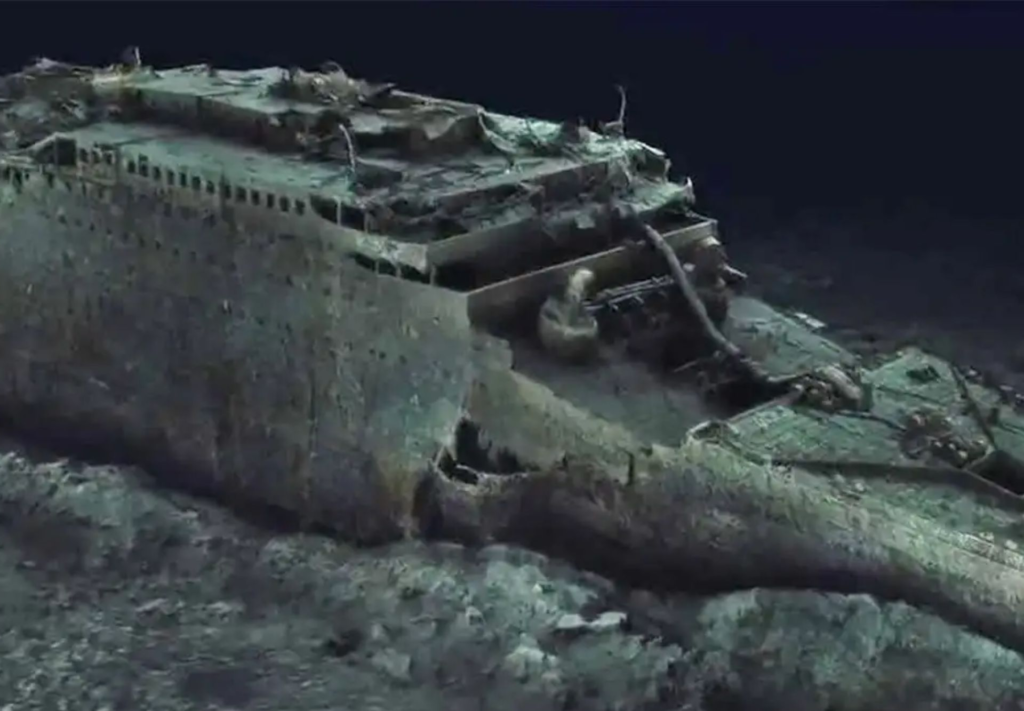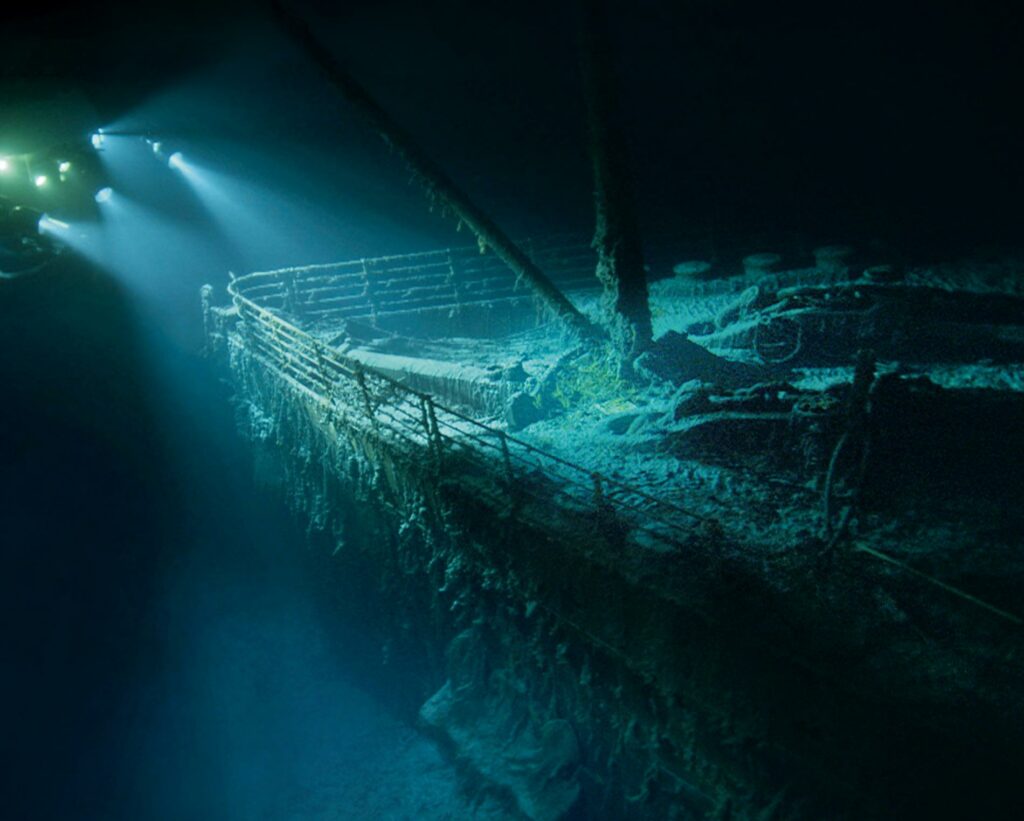The tragic sinking of the RMS Titanic on April 15, 1912, continues to captivate the hearts and minds of people worldwide. As the iconic vessel rests on the ocean floor, its remnants hold a wealth of historical and archaeological significance. However, what lies beneath the surface is not only a treasure trove of history but also a realm of immense depth and danger. In this article, we embark on a journey to discover the profound depths and hazards surrounding the Titanic wreckage.
The Titanic’s Final Resting Place:

At a depth of approximately 12,500 feet (3,800 meters), the Titanic lies in eternal repose on the floor of the North Atlantic Ocean. Located about 370 miles (600 kilometers) off the coast of Newfoundland, Canada, the site is one of the most inaccessible places on Earth. The wreckage is situated within the Titanic’s debris field, an area spanning around 5 by 3 miles (8 by 5 kilometers), making it a vast underwater graveyard.
The Perils of Extreme Pressure:
Venturing into the depths of the Titanic wreckage is no simple task. The immense pressure at that depth exerts a force of nearly 6,000 pounds per square inch (413.7 bars), equivalent to the weight of three cars balanced on a postage stamp. Submersibles exploring these depths require sturdy, specialized materials to withstand the immense pressure and potential risks of implosion.
Treacherous Conditions:
Exploring the Titanic’s wreckage is further complicated by the harsh conditions of the deep sea. The temperatures can drop to near freezing, reaching as low as 28°F (-2°C), and complete darkness engulfs the area. These challenging circumstances pose risks to both equipment and divers, necessitating advanced technology and rigorous safety protocols to ensure successful expeditions.
Preservation and Natural Decay:
Over a century has passed since the Titanic sank, and the wreckage has undergone significant natural decay. The harsh deep-sea environment and the activity of microorganisms contribute to the gradual corrosion and disintegration of the ship’s structure. Despite this decay, the wreckage continues to yield valuable insights into the ship’s construction and the events leading to its demise.
The Fragile State of the Titanic:

While the Titanic’s remains provide valuable historical information, it is crucial to recognize the fragility of the wreckage. Salvaging artifacts or attempting to raise significant portions of the ship would further accelerate its decay. Preservation efforts focus on non-invasive methods such as documenting the site with high-resolution imaging technology to create detailed 3D models.
Impact of Ocean Exploration:
Exploring the depths of the Titanic’s wreckage offers not only a glimpse into the past but also valuable lessons for future maritime safety. Discoveries made within the debris field have prompted improvements in shipbuilding and emergency response protocols. Additionally, ongoing research sheds light on the ecological impact of the shipwreck, providing insight into deep-sea ecosystems and the colonization of artificial structures by marine life.

The Titanic wreckage, resting in the deep abyss of the North Atlantic, remains a poignant reminder of one of history’s greatest maritime tragedies. Its location, depth, and treacherous conditions present numerous challenges to exploration and preservation. As we delve into the depths, we must balance our thirst for knowledge with the need to respect the fragile nature of this iconic vessel. By studying the Titanic, we not only honor the memory of those who perished but also unravel the mysteries of the past while enhancing our understanding of the deep sea and maritime safety.

